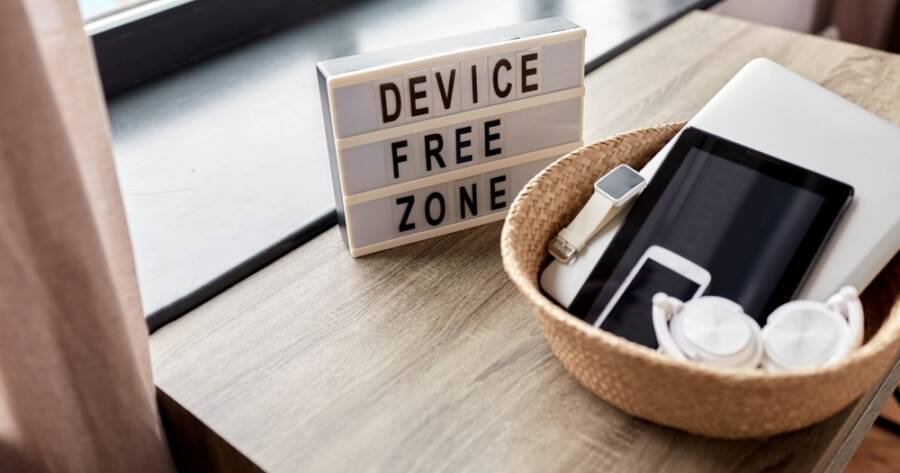In an age of constant notifications, endless scrolling, and digital overload, stillness feels rare. Many people start the day with their phone and end it the same way, caught between emails, updates, and alerts. The result is a restless mind—always reacting, never resting. Digital minimalism offers a way back to calm. It’s not about rejecting technology, but about using it with intention. By decluttering your digital life, you can cultivate a “mind like water”—focused, steady, and clear.
Rethinking Your Relationship with Technology
The concept “mind like water” by David Allen explains how to achieve mental clarity. And in an age of digital minimalism, that clarity begins with awareness. Before you can simplify, you have to understand how deeply technology shapes your habits and attention. Most people underestimate how often they check their devices or how much time disappears into online distractions. The first step is to observe without judgment.
Track your screen time for a few days and notice the patterns. When do you reach for your phone the most—boredom, stress, or routine? What apps draw you in without adding value? This kind of reflection helps you separate useful tools from digital clutter.
The goal isn’t to eliminate technology; it’s to reclaim control over it. When you become intentional about what you consume and why, every notification stops feeling like a demand and starts becoming a choice.
Decluttering the Digital Environment
Just as physical clutter can weigh on the mind, digital clutter can quietly drain focus and energy. Files pile up, notifications ping, and the sheer volume of information becomes overwhelming. Simplifying your digital spaces brings an immediate sense of calm and clarity.
Start small. Unsubscribe from emails you never read. Delete unused apps. Organize your desktop and cloud storage so important files are easy to find. Even turning off nonessential notifications can dramatically reduce mental noise.
If you’re feeling ambitious, schedule regular “digital declutter” sessions—perhaps once a month—to tidy up your inbox, bookmarks, and device settings. The more streamlined your digital environment becomes, the easier it is to think clearly and act deliberately.
Think of your digital life like a well-kept workspace. When everything has its place, focus comes naturally.
Reclaiming Attention Through Mindful Use
A calm mind isn’t about silence—it’s about focus. The constant pull of devices fragments attention, making it difficult to stay present. Practicing mindful technology use means creating boundaries that protect your focus and mental well-being.
Try setting specific times to check messages, instead of responding instantly. Keep your phone out of reach during meals, conversations, and creative work. Designate “no-screen zones” in your home—such as the bedroom or dining table—to strengthen your ability to disconnect.
You can also experiment with “low-information” mornings or evenings, avoiding social media or news during certain hours. By limiting input, you give your mind time to process, reflect, and rest.
Over time, these habits retrain your brain. You’ll find that you crave distraction less and enjoy presence more. Your mind, once constantly stirred by alerts and updates, begins to settle—like water returning to stillness after a storm.
Using Technology Intentionally, Not Automatically
Technology can be a powerful ally when used with intention. The key is to shift from passive consumption to active choice. Every digital interaction should serve a clear purpose—connection, learning, or creativity—not just filling empty moments.
Before opening an app or visiting a website, ask yourself: “What am I here for?” This quick question interrupts the autopilot scroll and forces awareness into the moment. If you don’t have a specific reason, it might be better to step away.
Consider curating your digital tools. Keep apps and platforms that add meaning or efficiency to your life and remove those that only create noise. Replace mindless scrolling with purposeful activity—like reading, journaling, or even simply sitting in quiet reflection.
When you start treating your attention as your most valuable resource, you naturally become more selective about where it goes. This selectivity is the essence of digital minimalism—it’s the art of choosing quality over quantity in every interaction.
Creating Space for Offline Life
The ultimate goal of digital minimalism isn’t to have fewer apps; it’s to have more life. When you reduce digital distractions, you rediscover time for real experiences—reading a book, walking outdoors, cooking, or connecting face-to-face. These moments re-ground you in the physical world, helping you recover the calm and creativity that constant connectivity erodes.
One practical way to nurture this balance is through regular “digital sabbaths”—short breaks from screens, even for a few hours or a full day. At first, the silence may feel strange, but soon it becomes a refuge. Over time, you’ll look forward to these pauses as opportunities to reset your mental rhythm.
Offline space allows for reflection—the kind that leads to deeper understanding, creativity, and emotional balance. It reminds you that calm doesn’t come from escaping technology but from using it wisely and making room for what truly restores you.
Calm Is a Choice, Not an Accident
Practicing digital minimalism is less about discipline and more about design. When you simplify your digital life, you’re not just organizing devices—you’re reshaping the rhythm of your days. You create space for thought, connection, and calm to return.
A “mind like water” doesn’t mean a mind free from motion; it means one that responds appropriately to each ripple without losing its depth. In a world built to pull your attention, digital minimalism is the quiet act of reclaiming it—and with it, your peace of mind.

